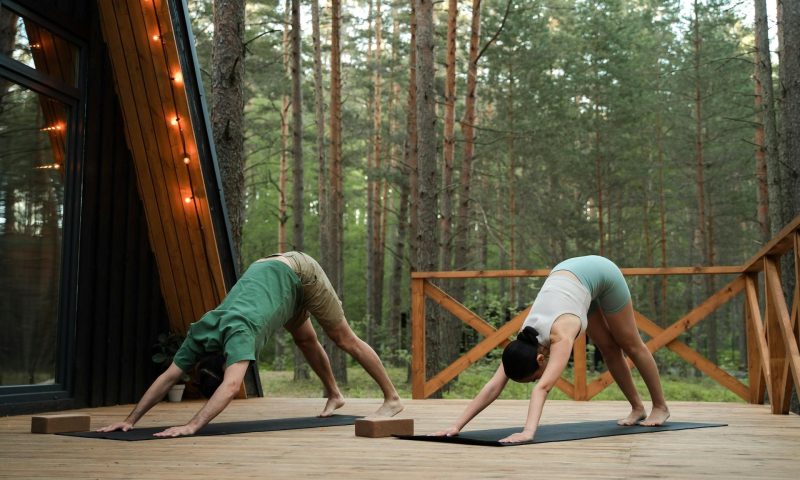Fitness trends come and go, but the best ones tend to stick around longer. Personally, I’m not a fan of overly complicated, stringent exercise routines like the 75-hard challenge, and I’ll likely fall off the wagon pretty early on. The popular 4-2-1 method provides structure without being overly complicated, so you don’t feel like you’re repeatedly checking the rules to make sure you’re doing it right.
The merging of structure and simplicity makes it one of my preferred choices, though it is time-consuming and requires dedication, so it might not be suitable for everyone. There’s a good reason why this method is increasingly popular and often recommended by physical therapists. Here’s your guide to the 4-2-1 workout split.
What is the 4-2-1 method?

The 4-2-1 method is a weekly workout split involving four days of strength training, two days of cardio or aerobic exercise, and one day of active rest or mobility. The plan is designed to help promote weight loss, maintain muscle mass, and improve your fitness with quicker results than just doing two workout sessions a week.
What are workout splits?
The 4-2-1 method is a workout split. Workout splits refer to how you split your workouts up throughout the week and what type of exercises or muscles you target in that session. Most people plan some sort of weekly workout split, where they repeat the cycle every week. Fitness buffs like Tyler Path still swear by the upper / lower body split for building muscle and discuss how workout splits matter.
How does it work?

Here’s how the 4-2-1 method works:
- Four days of strength training — Many people find the four weekly strength workouts help you target your major muscle groups more effectively than just one or two strength training sessions. You can train your lower body twice a week and your upper body twice a week with strength training bodyweight moves like push-ups and pull-ups and by incorporating resistance training and weightlifting with moves like bicep curls, the deadlift, and the overhead press.
- Two days of cardio or aerobic exercise — Most fitness buffs and physical therapists recommend staying mostly in Zone 2 training or a moderate-intensity aerobic workout. Aim for around 60 to 70% of your maximum heart rate, so you’re definitely feeling the workout, but you’re not maxing out. While the strength training days help you enhance your muscle power, the cardio days promote calorie-burning and overall fitness. Choose from several cardio options, such as power walking, cycling, moderate-intensity running, dance, stair climbing, and high-intensity interval training.
- One day of mobility — The mobility session is about prioritizing your recovery with stretching, restorative yoga, foam rolling, or other light activities. The idea is to focus on rest and recovery while still gently improving your range of motion and flexibility.
A sample workout split

Here’s a sample workout split:
- Monday — Upper body strength training, such as chest presses, shoulder presses, and bicep curls.
- Tuesday — Lower body strength training, such as squats, lunges, and deadlifts.
- Wednesday — Zone 2 steady-state cardio, like running at a moderate intensity.
- Thursday — Upper body strength training.
- Friday — Lower body strength training.
- Saturday — Zone 2 steady-state cardio.
- Sunday — Mobility and active recovery, such as restorative yoga and stretching.
On a sleepy Sunday, some people might need to take a full rest day with just a few simple stretches or without any forms of exercise or light activities. One of the best parts about the 4-2-1 method is that you can modify your plan to suit your schedule, fitness, level, and preferences.
If you wake up feeling too tired to power through a strength training session that day, you can always change it to a rest or mobility day instead.
Progression elevates performance

However you split up your workout, it’s best to switch up your routine over time and choose different exercises for the best results. Incorporating progressive overload, where you gradually increase your weights, sets, or reps, can help you overcome plateaus and achieve your fitness goals rather than sticking with the same exercises and the same weight for months and months.
It varies, but many fitness professionals suggest increasing the weight or the reps and changing up your routine every four to six weeks. Research reveals that progressive overload stimulates muscle growth and promotes muscle mass and strength gains. You can also try slowing down certain movements to increase tension.
What are the benefits of the 4-2-1 method?

The 4-2-1 workout structure provides a more balanced, straightforward exercise schedule while hitting the major muscle groups. The following are some of the many benefits:
- Combining cardio and strength training is more effective for weight loss and improving body composition.
- Researchers concluded that doing resistance training along with aerobic exercises reduces blood pressure and the risk of heart disease.
- Resistance training promotes muscle growth, and building muscle can improve your metabolic rate.
- Researchers found that Zone 2 cardio training can improve V02 max, which measures the maximum rate of oxygen your body absorbs and consumes during exercise, otherwise known as your oxygen uptake. A higher VO2 max is associated with a higher fitness level and better health, athletic performance, and longevity. It’s also associated with a lower risk of heart disease.
- Studies show all forms of strength training enhance muscle strength.
- Researchers concluded that those who completed regular mobility training maintained athletic performance substantially more than those who didn’t.
- This method is a well-rounded approach to fitness.
The 4-2-1 method provides structure, and you can always modify the split to suit your schedule.
What are the possible drawbacks?

The 4-2-1 method allows for flexibility, so there aren’t major drawbacks. This workout split isn’t as stringent or intense as other plans out there, like the 75-hard challenge. That being said, it might be too big of a bite for some people to chew, so to speak, because the idea is to try your best to stay committed to working out six days a week.
If you’re new to strength training and weightlifting, you might need to start out with just one or two days a week instead of the full four. The workout split also doesn’t have rigid rules regarding the duration of your workout sessions, so if you only have time or energy for a 15-minute strength training session, that works, too. Working out at home saves time traveling to the gym. If you have more specific goals, like training for a marathon, you might need to focus on having more cardio days instead of four strength days, so this split might not be the best fit.
Concluding thoughts

The best workout split for you is the one you’re most likely to stick to in the long run. The 4-2-1 method provides structure, without being overly stringent, but it does involve working out six days a week, which might not be feasible for everyone.



